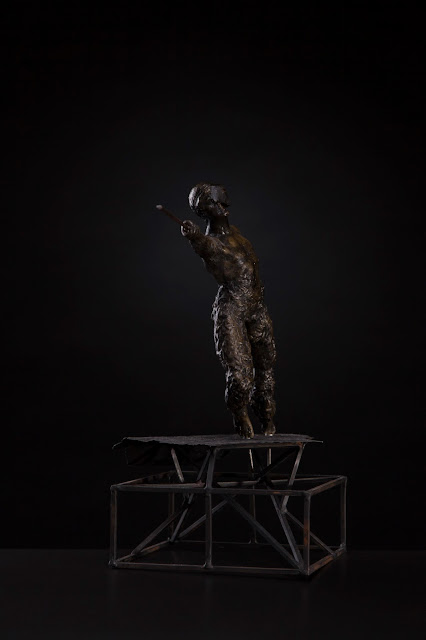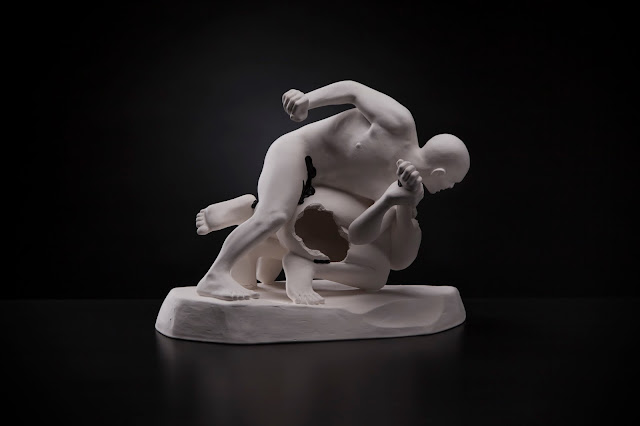FOTO: MICHAL ŠEBA
pondělí 17. srpna 2015
čtvrtek 13. srpna 2015
SPEKULANTI
In their ‘Czech Forest’ cycle, Prague artist collective rafani take an oblique approach to confronting a horrifying episode in their national history. Although at their birth Rafani announced themselves through overtly political manifestos, by addressing this suppressed event through a reappropriation of folk art, ‘Czech Forest’ displays a keen ability to navigate the borders of the political, the mythical and the aesthetic. In doing so, it adds a supplement to George Sieg’s argument that horror has its roots in xenophobia and the fear of the ‘enemy within’.
At the end of the Second World War, Czech inhabitants of the now-liberated Sudetenland turned on neighbouring Germans, whose families in some cases had inhabited the forest region for over a century, and drove them out with vengeful ferocity. The slogans reproduced in Rafani’s iconic images (from the ‘Unofficial Decalogue of Czech Soldiers in the Borderland’, a propaganda handbook published at the time) demonstrate starkly enough how this trium- phalist convulsion relayed the horrors suffered under occupation, revisiting them once more upon the innocent. But the ‘Czech forest’ of the title also conducts a deeper current: the Forest, as fairy-tale locus of darkness, where children get lost, monsters lurk, and, at dusk, branch and leaf become menacingly animate. By subtly adapting the folk-art-inspired woodcuts that often illustrate such tales, Rafani’s work connects the transmutation of the rage of the oppressed into xenophobic hatred, with the mythopoetic roots of fear, thus transforming the story from national history into psychogeographical fable of horror: it becomes a reminder of what lurks beneath the comfort of homeliness, and of the horror of the internal other.
http://www.urbanomic.com/Publications/Collapse-4/PDFs/C4_Robin_Mackay.pdf
Přihlásit se k odběru:
Příspěvky (Atom)










